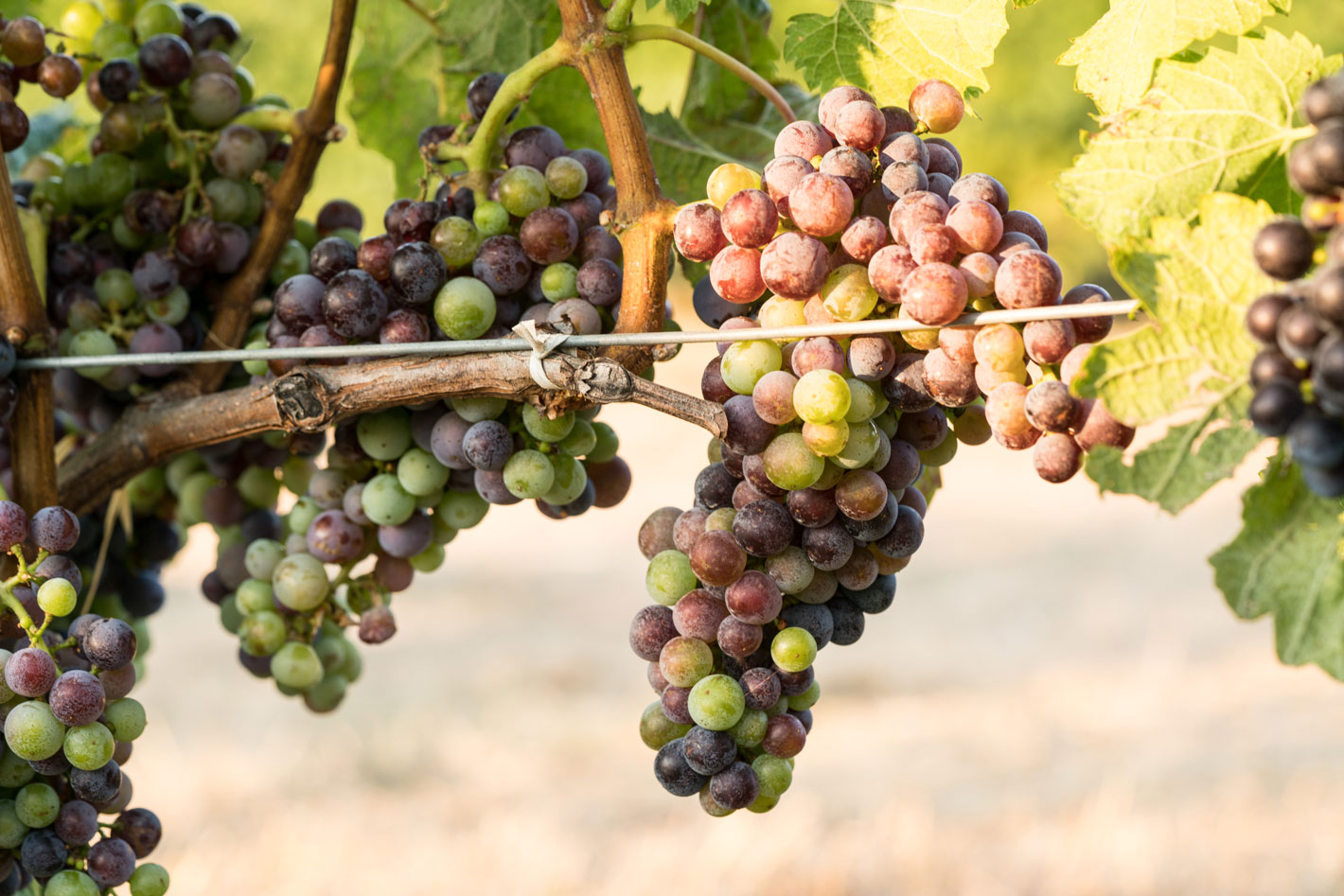
“The single most important winemaking decision is when to pick.”
—Chris Howell
Can We Find Ripeness in the Laboratory?
The single most important winemaking decision is when to pick. One would think that nothing would be easier than knowing when fruit is ripe. All the insects and the animals seem to know. So why should we humans find this so difficult? It is easy to see that such a momentous decision requires care and attention—and nature is telling us everything we need to know, if we can just observe.
But for some people, winemaking is alchemy. It is a way to transform the Earth into Gold, to get Wealth, Power, Love, maybe even to get Beauty, if one can own that.
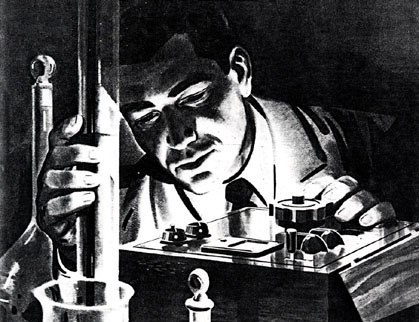
We should feel very lucky. With each step in the progress of science and technology—chemistry, microbiology, genetics, aerial and satellite mapping, chemical engineering, and so forth—new discoveries and technologies are applied almost immediately to winegrowing. This is a reflection of the love that humanity gives to wine! And yet, next to this beautiful passion lies something else: the ambition to create an ever greater, more perfect wine. And this leads inevitably to the quest for the magic “Faustian” key, to unlock the magic secret, to literally “make” the world’s greatest wine.
So when it comes to having to choose that most critical moment, when to pick, it is only natural that we should want to fall back on something on which we can rely, some objective measure, something we can test.
In winemaking, it has been like this now for more than two hundred years. The first tool was the hydrometer (to test density of the must for sugar content); then it was the titration buret (to test total acidity); then the refractometer (a more precise way to test sugar levels); then the pH meter* (to get an alternative measure of acidity); then the spectrophotometer (to measure color and tannin); and more recently, the HPLC (High-pressure liquid chromatography, used to characterize the anthocyans and polyphenolics). Next up: GC-MS (Gas chromatography-mass spectroscopy), which is used to characterize aromas and aroma precursors. If you don’t know what any of this means, don’t worry—it doesn’t matter. This quest will never end.

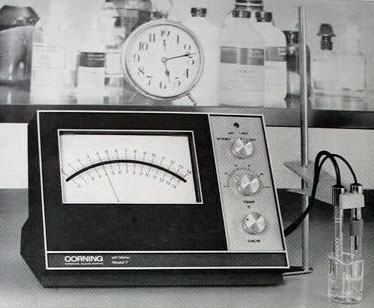
Above left: A pH meter, adapted from an advertisement circa 1936. Interestingly, the pH meter is one of the few analytical instruments developed specifically to assess fruit ripeness. Initially, in the 1930s, it was used to test acidity in the oranges of California. It was quickly applied to grapes, but remained a research tool up through the sixties. Only in the 1970s did the pH meter become widely used as a routine instrument in winery laboratories.
Above right: The Corning Model 7 pH meter, adapted from an advertisement circa 1978. This is the kind of meter that I first learned to use. The alarm clock (not part of the instrument) reminds us that work does not stop at five o’clock.
We should be able to see a pattern here: So far, each of these methods has failed to unlock the riddle—thus we are still looking for the magic key.
Here is the paradox: If you could control everything, would you really want to? And if everyone knew the same “secret,“ had the same recipe, the same “magic” formula, what would it be worth? It wouldn’t be a secret anymore, and all wines would resemble one another. I hope it is obvious to the reader that to my mind this path leads inevitably to the death of wine. Nonetheless, it’s not all bad; there is also much good. The role of science and technology in winegrowing deserves a more thoughtful discussion, which I will defer to another “Communique.”
Here is the good news: Despite the failure of science to determine ripeness, with our eyes, our nose, and our fingers we have everything we need if we will just take a walk in the vineyard. I like to ask enologists if they feel the need to test the tomatoes in their garden at home. Or if you need to perform an analytical test to determine which peach you should pick? Of course, in a commercial winery, which is after all, a business, we still do test; this is to avoid mistakes and to verify our observations. However, what we really need to know can only be found in the vineyard, the berries, and the juice. To get an idea of what we are looking for, let’s describe how ripening proceeds.
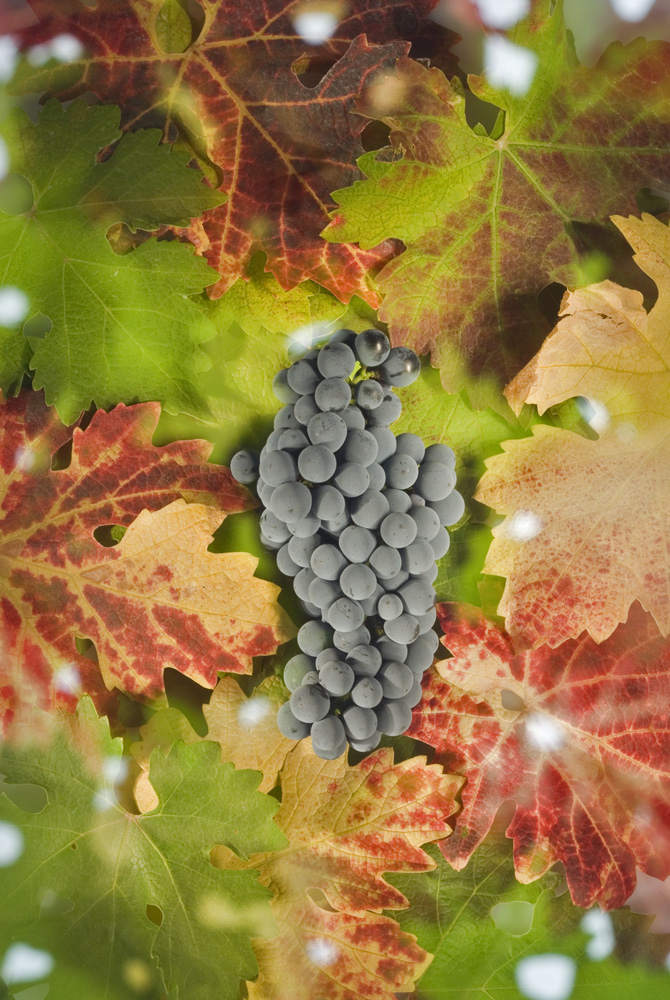
Once the berries have metamorphed from hard green vegetables into blue-purple, soft, succulent, perfumed fruit, true ripening begins. It is a process observed carefully by everyone in the vineyard: the bees, the birds, the raccoons, the coyotes, the turkeys, and all the rest of us. We can see the clusters change color, but we have to touch the fruit and taste it in order to perceive the changes taking place within.
The ripening of any fruit follows the same path. Sweetness increases, sourness falls away; the fruit softens. The perfume evolves through a spectrum of aromas from green and piquant, towards fruity and floral, then begins to fade into the “jammy” notes of cooked preserves, and dried fruit, ending in delicate balsamic notes of dried wood and leaves.
We can also see the effect of ripening in the resulting wines. The color and textural elements of wines made at different stages as the fruit ripens would seem to develop and evolve. The color becomes more intense and shifts subtly from red to purple to blue. The textural elements change too—as the tannins grow in intensity, they also shift from thin, bitter, and green-astringent toward more chalky, grippy tannins, and then deeper, richer, smoother—a more fat and silky sensation—finally fading away toward a chocolaty balance of bitterness and astringency.
The Continuum of Ripening and the Cain Moment
The grapes in each vineyard will ripen along their uniquely individual path, subject to the climate of the region, the variety, the site and the weather of the vintage. In general the fruit will evolve through several stages, beginning with green fruit, fresh fruit, mature fruit, dried fruit, and so on….
In a cool year, we must be patient and wait to get beyond green fruit, whereas in a hot year, we must pay attention and move quickly to avoid jammy fruit and boiled fruit characteristics. But, in any particular vineyard, each of these factors will align differently, creating a unique fingerprint—the signature of that specific vineyard.
Depending upon vineyard, the year, and our intention for the wine, the “Cain Moment” will be found somewhere in the range of maximum aromatic potential, floral-spicy, fresh fruit-mature fruit (but before dried fruit), peak of color, and in the early range of maximum of tannin-pigment complexity. Adapted from Alain Carbonneau, “Théorie de la maturation et de la typicité du raisin,” Figures 5 & 6, Le Progrès agricole et viticole, No 13-14, 2007, p. 282.
This path can vary significantly depending upon the climate, the vineyard site, and the variety. In fact, each vineyard will follow its own path. In each vineyard, the aromas, the sweetness and the texture will find their own balance. This is why any attempt to make a “Bordeaux-style” or “Burgundy-style” wine, if one is not in Bordeaux or Burgundy, is inherently doomed to failure. It is simply this: the fruit ripens under a different sun, in a different atmosphere and ecology, the vine’s roots explore a different soil, and the rain falls differently.
No wonder the fruit ripens differently in each place, and thus the wine’s potential must necessarily be different. Honestly, this is good news to anyone who truly loves wine, and is not seeking to simply clone Petrus or Romanee-Conti, because if all wines tasted the same, we would be bored.
It is the winegrowers’ job, and pleasure, to observe and note these differences, and to adapt their harvest timing and vinification methods to the specific vineyard, in a specific year, the wines it has the potential to yield, and that which corresponds to their aesthetic values.
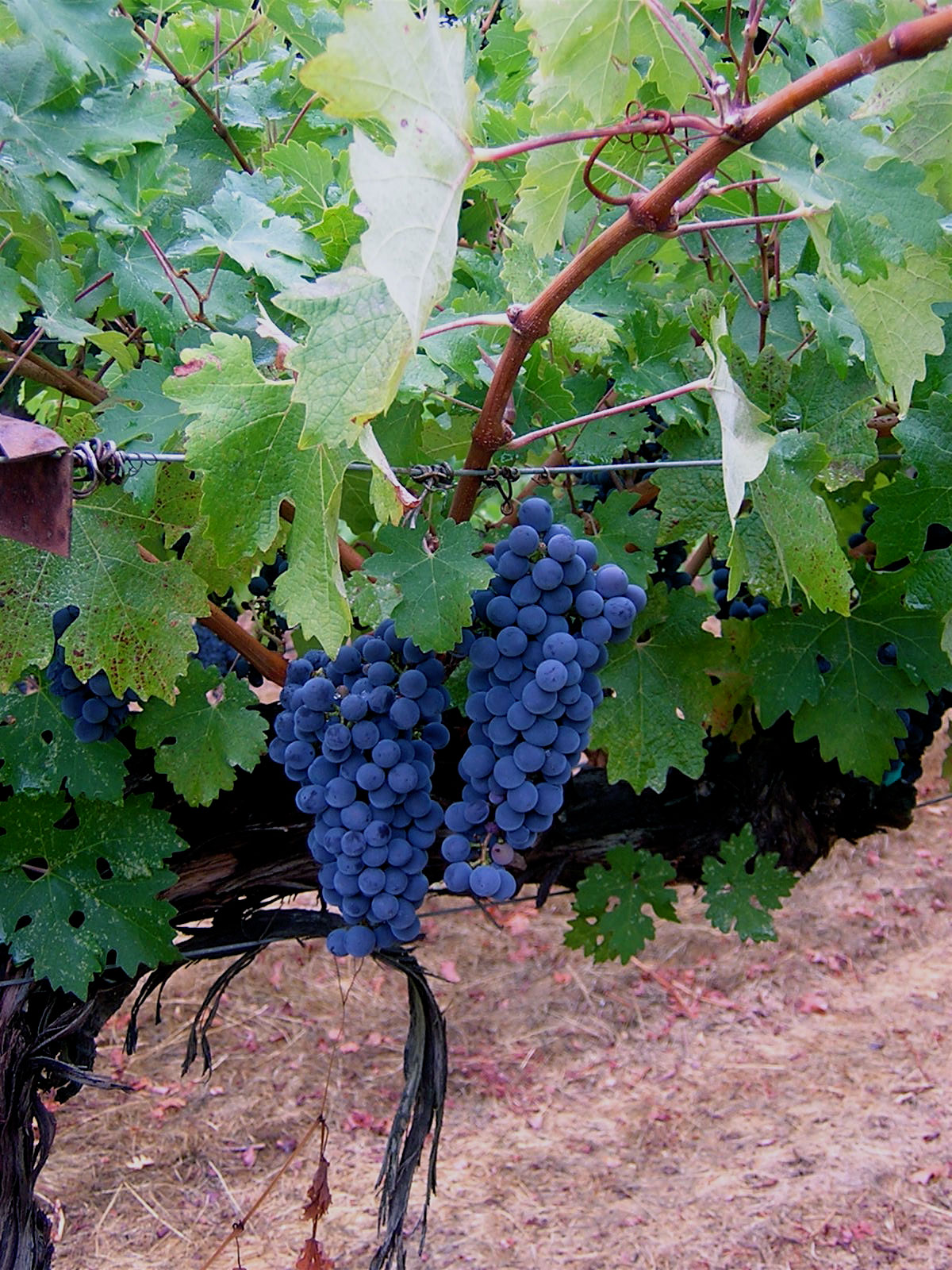
Let’s take a walk in the vineyard. In order to get a good feeling for how the ripening is progressing, it is essential to have followed the vines closely through the course of the year, and to have memory of how the vines behaved in prior years. Especially, we need to remember the weather up to this point, the rainfall, its quantity and timing, how the flowering occurred, and then the critical transformation at veraison.
From the time the fruit has become purple, we know that it will usually be ripe in four to eight weeks. Knowing this timing tells us when to visit the vineyard. One of the first signs we look for is the transformation of the vine shoots that support and nourish the grape clusters. Up through mid-summer, these green, herbaceous shoots are actively growing. But then we look for the growth to slow down and for the green tissue to turn brown. The tender green shoot will become the hard woody cane that prepares for next year. It is a physiological signal. This is when the fruit can truly begin to ripen. Eventually, the stem within the grape cluster may, itself, begin to lignify, beginning at the base, where it attaches to the cane. Finally, a few leaves, near the cluster, may begin to turn yellow, presaging the onset of autumn.
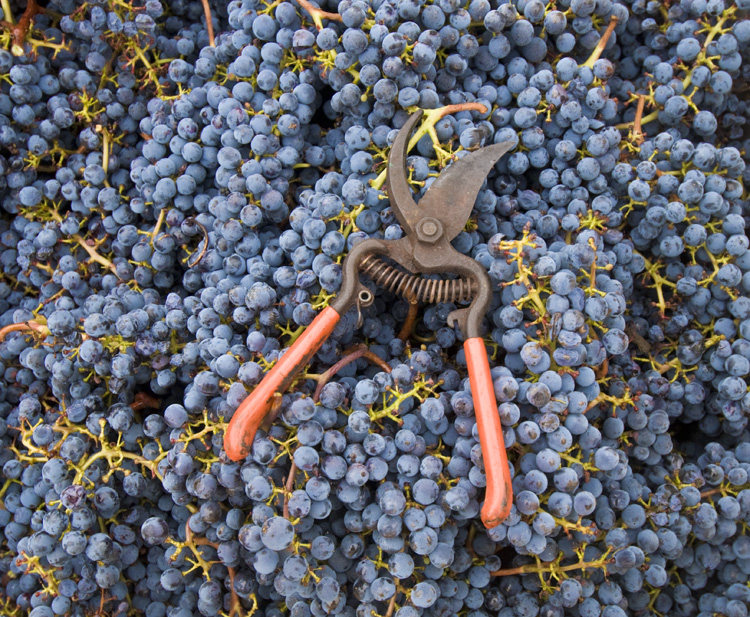
As these stages in the lifecycle of the grapevine evolve, we look for signs that the berries are beginning to soften. We take note as the skin of the berry becomes more tender, and the berry detaches easily from its stem, leaving a delicate “paintbrush” of the conductive fibers that nourished the berry as it developed. As the hard green pulp becomes translucent, and begins to dissolve, this ‘paintbrush’ takes on the pigment from the skin. In time, the pulp separates easily from the seeds, and the seeds, at first green and tender, progressively harden and turn brown, eventually taking on the color of a roasted coffee bean.
Before making the decision to pick, we have walked the vineyard many times, usually more than one of us. And as the fruit becomes nearly ripe, we collect samples, berries from many different clusters on many different vines, which we bring back to the winery, where we squeeze out the juice for testing. Knowing the basic chemistry (sugar and acid) certainly helps to keep us on track. But the most revealing thing is to see the color of the juice in the glass, the way it settles, and to smell the perfume. At first, the juice is green and muddy, but as the fruit ripens, depending upon the vineyard and the variety, the juice clarifies and begins to take on a pink hue. The aromas, at first frankly herbaceous, begin to evolve through fruit-floral notes, such as raspberry, cherry, and plum.
Most importantly, just as it is possible to harvest too early and to pick the fruit when it is under-ripe, so too is it possible to wait too long, and to bring in fruit that is over-ripe and has faded. The key is to find that moment, and the interesting thing is that we will not all agree….

—Christopher Howell, Wine Grower
Text Copyright ©2012 Cain Vineyard & Winery, All Rights Reserved
Click for a printable PDF of “Communiqué: On Ripening
See more in this series: “Communiqué: On Pruning” | “Communiqué: on Flowering”

